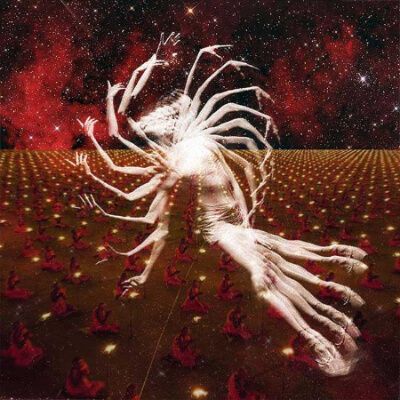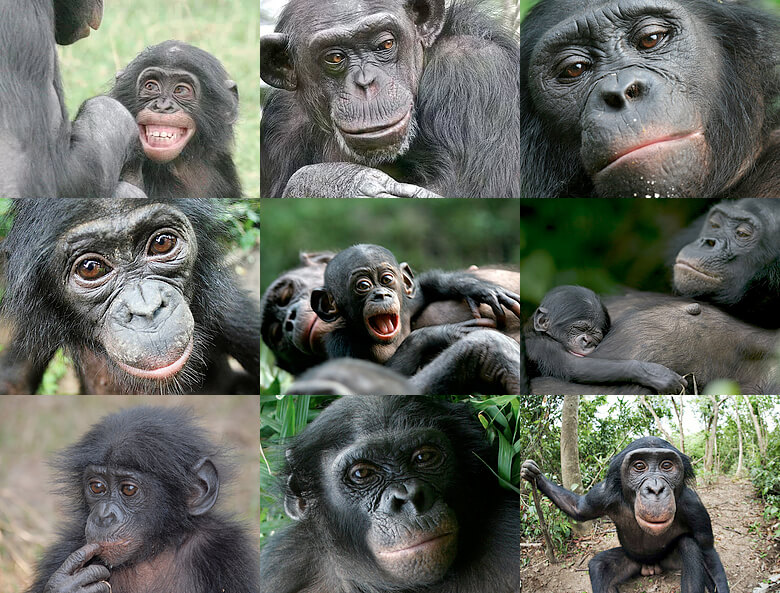Casual Musings on the Multiverse, Reality, & Humanity
Published on January 18, 2018.
Written by Chad Timblin.
The Multiverse
The universe that we all (barely) know and (usually) love is not the only universe that exists. It is part of an infinite universal network known as the multiverse.
The multiverse can be visually represented by a fractal extending to infinity. Each universe exists as a particular node along the infinite multiverse fractal. According to Benoit Mandelbrot, "a fractal is a shape made of parts similar to the whole in some way."
Mandelbrot Zoom with 750,000,000 iterations
This infinite fractal represents the substratum of all reality. It sustains every known and unknown universe. Krishna, the symbolic representation of God for many Hindus, says in the Bhagavad Gita: “The entire universe is suspended from me as my necklace of jewels”
(Easwaran 153). Two more translations: “Upon me, these worlds are held / Like pearls strung on a thread”
and “On Me all that is here is strung like pearls upon a thread”
(Prabhavananda 82; Aurobindo 118).
In some sense, the hypothetical multiverse could be called the ‘Mind of God’ because from a human perspective, it would take God-like intelligence and consciousness to even fully conceive of the multiverse, much less create it. Needless to say, the multiverse hypothesis stretches the human mind to its limits.
 https://8tracks.com/vhen/betwixt-the-vicissitudes
https://8tracks.com/vhen/betwixt-the-vicissitudes
Each universe within the multiverse, as well as each aspect within each universe, seems to be involved in an upwardly spiraling evolutionary journey. Any manifest ‘thing’ that exists is a microcosm of the macrocosmic multiverse. The whole is contained within all of the parts while simultaneously transcending all limitations (think of the metaphor of Krishna holding the worlds like pearls on a thread). “As above, so below.”
The comprehensive evolutionary journey of life on planet Earth is perhaps the same underlying journey, to a lesser degree, that the universe at large is on. This journey could be vaguely referred to as the journey to ultimate novelty. Ultimate novelty is hard to define, but it could be something like a state of maximal existence, consciousness, and bliss (Satchitananda), with all potentiality actualized.
What Is Real
What is real is relative from the perspective of limited beings. Existential phenomena that happen in this universe are real for beings who experience them due to being present when the event occurred and to having the necessary perceptual apparatuses. These same phenomena are not real for beings or objects that do not have the necessary capabilities (biological, sensory, technological, intellectual, etc.) to perceive them.
Our universe can be said to be a simulation, or not real in an ultimate sense, because it is sustained by a multiverse framework that is larger and transcendent to our universe. In other words, our universe exists in the Mind of God. Whatever catalyzed the existence of our universe and everything in it had to have been utterly transcendent in power and consciousness to everything that exists within the ‘box’ of the universe we find ourselves in now.
Humanity's Role
Humanity, the rest of life on earth, and the universe itself continue to evolve towards greater complexity/novelty, at different rates. Ever since the dawn of anatomically modern humans, technological innovations have been gradually moving humans from tribal societies to global societies. Currently, humans have the greatest potential to explore reality because of our relatively high level of intelligence compared to other life forms on Earth. We are fortunate to have the opportunity to use our ever-expanding consciousness, intelligence, and complexity for good and to gradually discover our niche in this complex system of interconnectedness. The further we collectively evolve, the more we will be able to understand and collaborate with our evolutionary process.
For reasons we are still trying to figure out, humans happen to be further along the path to ultimate novelty than all other earthlings. It is possible that other earthlings will never progress much further than they are now because of humanity's control of the planetary environment, though it is always possible that a cataclysmic event could upturn the current order of things, similar to the asteroid that wiped out the dinosaurs and created a vacuum for mammals to grow into (I hope this doesn’t happen.)
It is no secret that bonobos, along with chimpanzees, are our closest biological relatives (Gibbons). Look closely into the eyes and faces of these bonobos and pay attention to how doing so makes you feel.
 Bonobos
Bonobos
The subtle facial nuances expressed by bonobos is easily accessible evidence for the close connection human and chimp species share for non-scientists (like me).
Because bonobos, chimps, and other primates are the most closely related animals to humans, they can be seen as less complex versions of the human biological (hardware) and mental (software) system. Like humanity, other primates are on their own evolutionary path. Scientists recently reported that chimpanzees and monkeys have entered the Stone Age (Barras).
There are a lot of variables that trigger human evolution—most of them are currently outside of our understanding. Mother Earth has lovingly provided many technologies to help humans evolve, such as psychedelic plants.
L.M. Montgomery wrote in The Blue Castle: “We don't know where we're going, but isn't is fun to go?” Though it’s likely the context in which she wrote this sentence was not very cosmic, I think her sentiment nicely conveys the feeling of being a human in this vast, mysterious, and beautiful universe.
Works Cited
Aurobindo, Sri, and Anilbaran Roy. Bhagavad Gita and its Message. Lotus Press, 1995.
Barras, Colin. “Chimpanzees and monkeys have entered the Stone Age.” BBC, 18 Aug. 2015 www.bbc.com/earth/story/20150818-chimps-living-in-the-stone-age.
Easwaran, Eknath. The Bhagavad Gita. Nilgiri Press, 2007.
Gibbons, Ann. “Bonobos Join Chimps as Closest Human Relatives.” Science, 13 June 2012 www.sciencemag.org/news/2012/06/bonobos-join-chimps-closest-human-relatives.
Prabhavananda, Swami, and Christopher Isherwood. Bhagavad-Gita: The Song of God. Signet Classics, 2002.